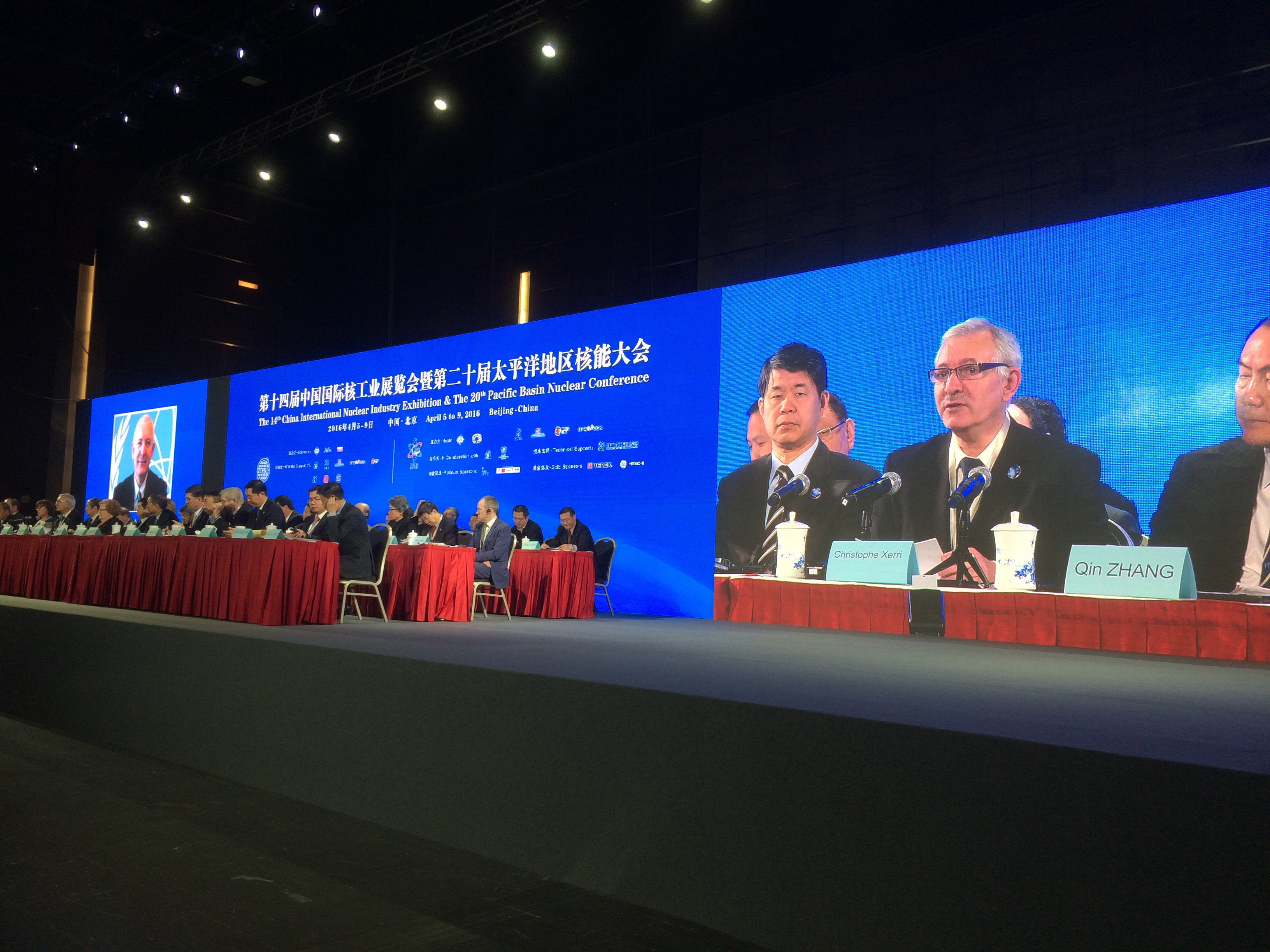Speaking at a major international conference this week, the Director of the IAEA's Division of Nuclear Fuel Cycle and Waste Technology, Christophe Xerri, highlighted the many aspects of nuclear energy that feature the figure "60" in 2016. Reaching 60 is an anniversary of particular significance in several Asian countries.
Below is the statement Mr Xerri delivered on behalf of the IAEA at the 20th Pacific Basin Nuclear Conferenceheld in in Beijing, China, this week and organized in collaboration with the IAEA:
Nuclear Power came to life around 60 years ago. With a few ups and downs, today around 30 countries are using nuclear power for energy production, and most of them wish to continue to do so. The 444 nuclear power reactors running today in these 30 countries provide about 11% of the world’s electricity. And another 30 countries, which we simply call the “newcomers”, are considering, planning or actively working to include nuclear power in their energy mix. Asia is at the forefront of this reality: Of the 64 reactors that are being built across the world today, 42 are in Asia; thus making the Pacific Basin of utmost relevance for the future of the nuclear industry.
Reflecting back on the last 60 years, the pioneers have developed a robust technology and the associated fuel cycle. Along the years safety has been improved and is further improving with the full integration of the lessons learned from Fukushima. That being said, the quest for continuous improvement shall never stop, and the culture of safety and of security must be as well established as the technical culture in which engineers have been brought up. Stakeholder involvement and social understanding are mechanisms that have also developed over the years and are there to stay. They add a non-technical dimension to what is expected from our industry, and they will further support the introduction and operation of nuclear energy.
Looking to the next 60 years cycle, nuclear energy remains a field for innovation and development:
- The pioneer facilities are reaching the end of their life, and shall be decommissioned. First are workshops at research centres and the first reactors. Next will be the fleet of commercial power reactors. This is the normal life cycle of any plant: it opens a new field of activity.
- So far, 156 nuclear power reactors worldwide have been permanently shut down or are undergoing decommissioning and about 10% of them – 17 reactors – have been fully decommissioned. Here’s another striking figure: More than 55% of all the operating reactors are over 30 years old. About 15% of all the operating reactors are over 40 years old. Yes, some should continue to operate longer, but still many will be retired from service within the next two decades. In addition, more than 480 research reactors and critical assemblies, and several hundred other fuel cycle facilities have been or are being decommissioned.
- In other words, decommissioning and environmental remediation are domains in surging demand. Demonstrating that the industry can safely and effectively dismantle nuclear facilities, at an affordable cost, will be instrumental to give confidence in building new reactors.
- Waste disposal is often mentioned as the “unfinished step”. In fact, disposal facilities for Low Level and Medium Level waste (LLW) are already operating in more than 20 countries. Disposal of LLW is becoming a routine operation and in many countries it is performed on an industrial scale. Decades of thoughtful work, both scientific and social, has provided a sound basis for progress. Following the path of Finland, geological repositories in Sweden and France are progressively moving towards licensing and operation. In Asia and the Pacific Basin, several countries are actively pursuing geological disposal programs and policies.
- In addition to the mainstream technologies of today, there is a call for developing and operating new technologies. There is a renewed interest in fast reactors, with their high potential of recycling uranium resources. There is a strong interest to bring to the market Small and Medium Size reactors, which will be best suited to smaller electricity grids. Many of those “newcomer countries” would welcome such solutions.
This year, the International Atomic Energy Agency is also turning 60. The Agency’s vision is “Atoms for Peace and Development,” leveraging scientific knowledge to the benefit of health, food and energy. Our mission is to support our Member States in developing, introducing and using nuclear technologies, from sealed radioactive sources used in hospitals to nuclear power plants, in a safe, secure, peaceful and efficient way.
In the last 60 years, nuclear energy has brought and still brings energy security, at reasonable economic conditions. Looking ahead, to the coming 60 years, we must implement the Paris Agreement on Climate Change, which gives further weight to developing a low carbon energy society. Nuclear power has already significantly contributed to climate change mitigation by avoiding nearly 2 billion tonnes of carbon dioxide per year; and it can continue to play a significant role in limiting global warming to 2oC by the year 2100. Renewable energy will grow, and nuclear energy should certainly remain a component of the energy mix for the countries to achieve many of the United Nations Sustainable Development Goals.
